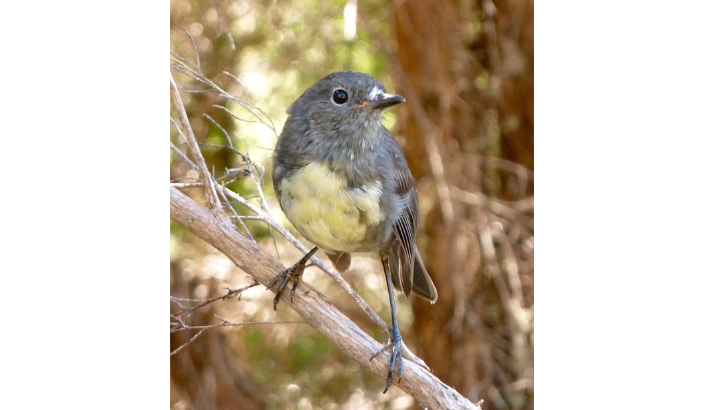DoC and predator free movement ignoring basic ecology


South Island bush robin. Photo: Tony Orman.
TONY ORMAN
The Department of Conservation and the Predator Free movement are not facing up to ecological realities and the consequences of disrupting Nature’s food chain says Otago-based scientist Dr Jo Pollard in an article in the New Zealand Deerstalkers’ Associations magazine “New Zealand Hunting and Wildlife.”
“Unfortunately, there is a history off dysfunction whereby conservation management has departed from science,” she said. “The science indicates a need for careful studies and saving habitat rather than mindless interference and indiscriminate poisoning.
Dr Pollard cited instances where the department ignored scientific studies that had pointed out the detrimental consequences of major interference with the role of predators.
“Getting rid of mice can have unforeseen consequences".
A Landcare Research study found when other mammals such rats and stoats were fenced out of a reserve, without a predator, mouse numbers rose. The increased number of mice feeding on weta, caterpillars and other invertebrates, reduced the invertebrate numbers with potentially “catastrophic effects” on other species such as native earthworms.
“There are many questions how to deal with increasing mice, once their predators have been killed off. “
Several studies of alpine-dwelling stoats have confirmed rats are stoat’s preferred prey with birds very minor at less than 2 percent of the stoat’s diet.
However, when rats were removed, stoats without their usual prey, switched to small birds (15 - 26 percent) and skinks (19-57 percent).
The food chain gets more complex as shown by studies on 38 Fiordland islands where Norway rats and stoats were removed several decades ago. In the absence of rats and stoats, native bush robins flourished “seemingly aggressively ousting other bird species such as grey warbler, silver eye and tomtits.”
“The authors warned that killing off predators to achieve ‘restoration’ can cause declines and disappearances of native bird species,” said Dr. Pollard. “Did taking away the introduced predators reduced the diversity of birds?”
Two studies demonstrated the classic rat population response to aerial 1080 poisoning with numbers rebounding after several months and reaching higher levels than before poisoning began.
“Rats are especially well equipped, through their lifestyle and physiology to withstand a 1080 poison war,” said Dr Pollard.
She echoed noted ecologist Dr Carolyn King’s advice from decades ago that “conservation of species is conservation of habitats.” Encouragingly was that a very recent Landcare Research stressed the need to preserve habitat stating its loss and modification “is a principal, ongoing cause of indigenous biodiversity decline.”
Dr Pollard was critical of the Department of Conservation’s one-dimensional approach saying DoC’s chief scientist Graeme Elliott should have heeded Dr Carolyn King and focussed on the observation that mohua, needing tall forest trees on valley floors, were suffering from habitat loss. Instead, stoats were blamed for the mohua’s decline, leading to rampant stoat trapping, followed by rats-stoat’s prey - consequently getting out of control and eating the mohua.
The final nail in the coffin was DoC’s onset of aerial poisoning to quell rats she said. “Perhaps the Predator Free movement and DoC might yet face up to ecology,” said Dr Pollard.
